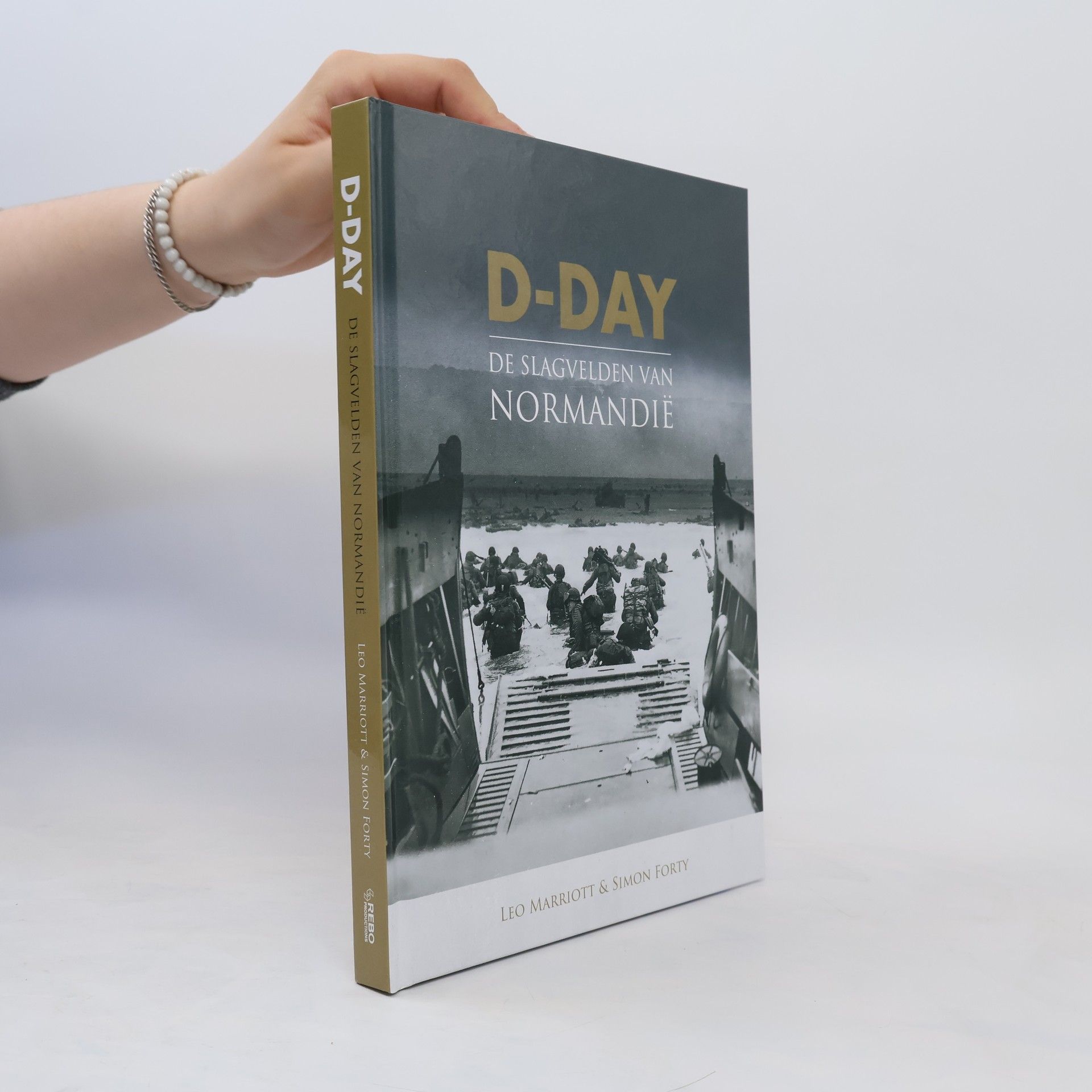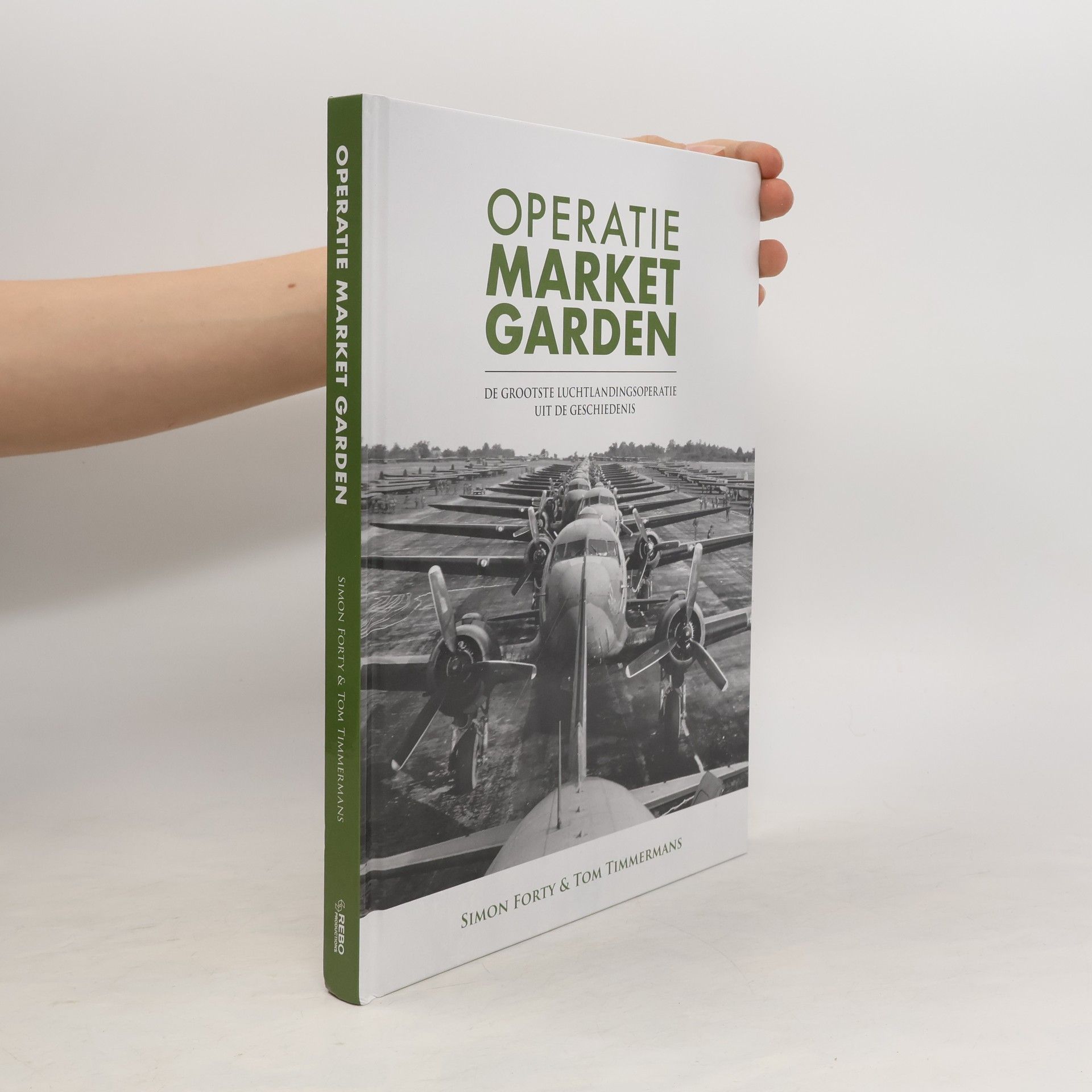Operatie Market Garden
De grootste luchtlandingsoperatie uit de geschiedenis
Simon Forty is de auteur van talrijke rijk geïllustreerde boeken die zich richten op historische en militaire onderwerpen, met name de slagvelden van Normandië en de bevrijding van de Lage Landen. Zijn werk kenmerkt zich door gedetailleerd onderzoek en visuele presentatie, waardoor lezers een diepgaand inzicht krijgen in cruciale momenten van de Europese geschiedenis. Fortys stijl is zowel informatief als toegankelijk, wat zijn boeken tot een waardevolle bron maakt voor zowel historici als algemene lezers.






De grootste luchtlandingsoperatie uit de geschiedenis
De slagvelden van Normandië
Fotoboek met een overzicht van de D-Day-locaties tijdens de invasie en in de huidige tijd.
"The Normandy Battlefields details what can be seen on the ground today using a mixture of media to provide a complete overview of the campaign. Maps old and new highlight what has survived and what hasn't; then-and-now photography allows fascinating comparisons with the images taken at the time. The Normandy Battlefields: D-Day & the Bridgehead ended as the Allies fought to expand their D-Day foothold. In Bocage and Breakout, Leo Marriott and Simon Forty take the story forward as the success of the invasion continued into the Cotentin, with Cherbourg falling on 29 June, before it bogged down in face of determined German defense and the bocage countryside--innumerable small fields surrounded by hedgerows, each one hiding anti-tank weapons, mortars and machine guns. As US First Army fought its way south, on the eastern edges of the bridgehead, British and Canadian forces were fighting a war of attrition around Caen facing the bulk of the German armor as division after division was fed into Normandy. Like a pressure cooker, the fighting intensified until, seven weeks after D-Day, Operation 'Cobra' broke the German line. Quickly Patton's Third Army, operational from 1 August, flooded through the gap exploiting the German confusion, encircling what was left of the German armies in the Falaise Pocket and advancing quickly through into Brittany. Three weeks later, the Battle of Normandy was over, the routed German Army--without most of its heavy weapons left in the Falaise Pocket or on the banks of the Seine--was retreating helter skelter back towards Germany and the Low Countries pursued by the Allies in a reverse of the 1940 Blitzkrieg campaign. The three months of war in June--July 1944 were brutal, with losses of front-line troops as heavy as in World War I. The German defense was tenacious, particularly in face of Allied air supremacy. The Allies struggled to get into a position to allow their more mobile forces room for maneuver and and the fighting was ferocious. When victory came, it came at a cost: 209,672 casualties among the ground forces, including 36,976 killed and 19,221 missing. The Allied air forces lost 16,714 airmen. The corresponding German losses were even more significant: some 450,000 men, of whom 240,000 were killed or wounded. More important to the Germans were the losses of heavy equipment--tanks, assault guns, artillery, personnel carriers. As an example, 12th SS Panzer Division had lost 94% of its armor, nearly all of its artillery and 70% of its vehicles. With c20,000 men and 150 tanks before the campaign, after Falaise it had 300 men and 10 tanks. Mixing text, maps and images, many of them specially commissioned including aerial photography, The Normandy Battlefields: Bocage and Breakout explains and interprets the complexities of the Normandy campaign in an original and cohesive package."--Amazon.com
Photographs old and new reconstruct the fierce fighting around Falaise and Chambois in 1944, providing a vivid comparison between then and now.
The Industrial Revolution changed our world in a way that few other events it changed the landscape with heavy industries using the plentiful supply of fossil fuels. It changed our lifestyles as urban life took over from rural. Wages brought freedom of travel and social mobility to many. The world of 1700 looked vastly different to that of 1800 as the foundations for the modern age were laid. 100 Innovations of the Industrial Revolution celebrates the major inventions and projects of the period 1700-1860, a period when science and technology began to establish its role in modern life.
The Past & Present Series reconstructs historical battles by using photography, juxtaposing modern views with those of the past. It shows how much infastructure has remained and points to the passing nature of things such as outfits, uniforms, and ephemera. Operation Tonga began at 22:56 on the night of 5 June, when six Halifax heavy bombers took off from Tarrant Rushton towing six Horsas carrying a coup-de-main force consisting of D Coy, Ox and Bucks LI reinforced with two extra platoons from B Coy and a party of sappers, who were tasked with capturing the bridges over the Caen Canal and the River Orne. 6th Airborne Division--which included 1st Canadian Para Bn--had been allotted three specific tasks to achieve, apart from protecting the eastern flank of the Allied seaborne landings. First, it was to capture intact the two bridges over the Caen Canal and the Orne River at Benouville and Ranville. Second, the division was to destroy the heavily fortified Merville coastal artillery battery located at Franceville Plage, to ensure that it could not shell the British forces landing on Sword Beach. A third task was to destroy several bridges spanning the River Dives--at Varaville, Robehomme, Bures, and Troarn. The division would then hold the territory that it had seized until it could be relieved by advancing Allied ground forces.
and, finally, the men had to embark and the armada had to deliver its cargo to a strict timetable under enemy fire onto a hostile shore. For understandable reasons, the emphasis on remembrance of D-Day is focused on the beaches: that's where the battles took place; číst celé
First paperback edition of the pictorial history of the decisive role played by Canada in northwest Europe during the final year of World War II, with action and aerial photographs, maps and memorials.
Photographic history of the German, Soviet, French, Italian, Swedish jet fighters of the 1940s and early 1950s.
Graphic, detailed history of US naval aviation from the early twentieth century to the end of the Second World War.